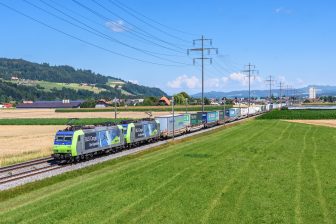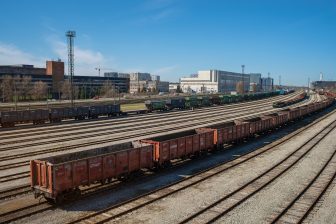Netherlands saw plunge in rail freight traffic 2017
The Netherlands witnessed a decline in overall freight traffic on its railway network last year. Rail freight volumes through the Port of Rotterdam dropped with nine per cent, while the tonnage of cargo moved to and from the German border declined with three per cent. Dutch infrastructure manager ProRail considers the land slip at Rastatt and the reduction of reliance on coal in Germany as the main factors weakening the sector in 2017.
Especially the Port of Rotterdam was affected. While the gross tonnage of cargo moved by rail amounted to 51 million in 2016, it dropped to 46.6 million last year. In terms of number of trains, the plunge resulted in 2,200 fewer freight trains on the network compared to the previous year. On route to the German border, gross freight tonnage dropped from 72.4 million to 70 million, or a decline with 1,100 freight trains.
Causes
The German government closed several energy plants thriving on coal early 2017. Coal being a significant commodity for the rail freight sector, ProRail points at these closures as partly causing the sudden drop. In addition, the Rastatt incident has impacted freight volumes throughout Europe, it beliefs.
On the 12th of August, a land slip at the construction site of the new 4.27 kilometer tunnel being built at Rastatt caused major damage to the construction site and adjacent railway track. A twenty kilometer stretch of railway from Rastatt to Karlsruh on one side, and Rastatt to Basel on the other side had become inaccessible for train traffic. As the line forms an integral part of the north-south axis connecting the ports of Rotterdam, Hamburg and Antwerp to Italy, the European rail freight industry was largely affected.
According to ProRail, at least 500 train trips between Rotterdam and Switzerland/Italy were cancelled, on top of around 100 journeys between Moerdijk/Lutterade and Italy. Operators such as Contship’s Rail Hub Milano (RHM) and Hupac announced a decline in their rail freight numbers due to the closure.
Other traffic surged
On the other hand, rail freight traffic to and from the Belgian border increased, as did the volumes transported through the Netherlands as a transit country. While gross tonnage en route to or from its southern neighbour amounted to 13.7 million in 2016, this increased to 15.2 million tonnage in 2017, indicating a climb of 10 per cent. The number of trains on transit surged from 3,850 in 2016 to 4,950 last year. This can be explained as the Dutch route either proved to be the shortest, or the most suitable for the transport of heavy goods, ProRail said.
While these numbers somewhat compensated for plunge in traffic on other routes, the total number of kilometers passed by freight trains in the Netherlands dropped by 6 per cent to 9 million. ProRail said to be confident the downward trend will be reversed in 2018.





